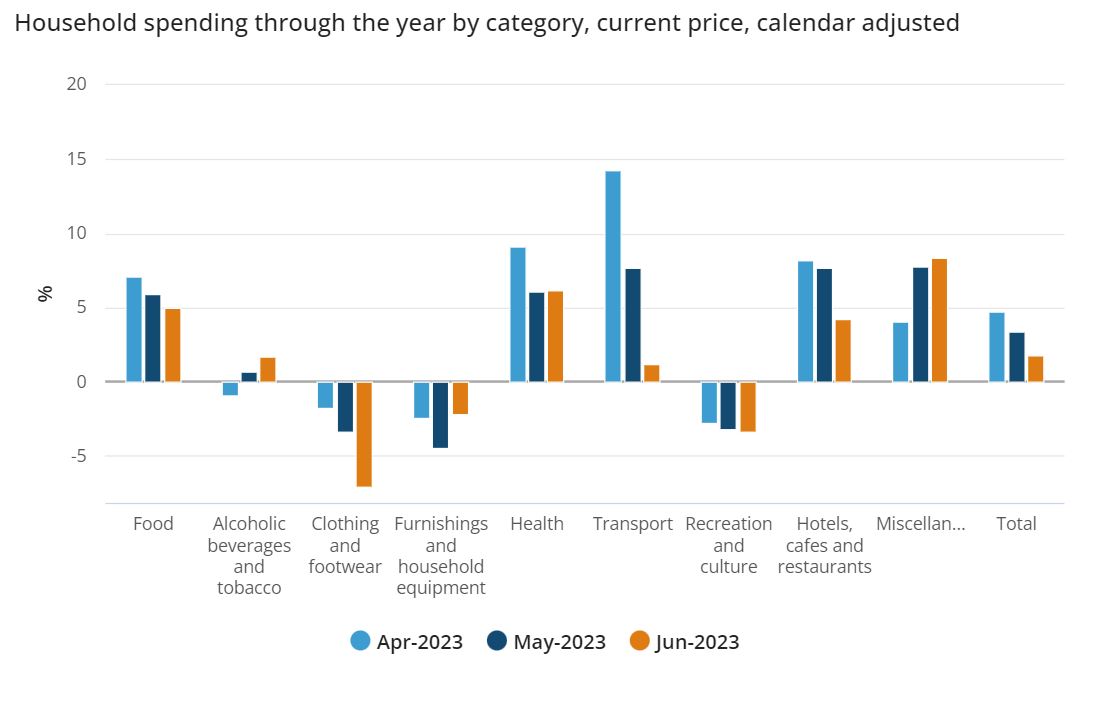Household spending was 1.8% higher in June '23 compared to June '22.
- Household spending rose 1.8% in the twelve months to June, the softest growth rate since February 2021.
- Discretionary spending dropped for the third straight month, suggesting higher rates are having their intended effect.
- Services spending - rent, travel etc - is proving harder to budge.
Discretionary spending dropped for the third straight month, down 0.7% through the year as households adjust to elevated cost of living and interest rates.
Non discretionary spending was up 4.2% through the year, but this growth rate has been on the way down since January, when it was 21%.
Miscellaneous goods and services, which includes child care, legal services and personal care, saw the biggest annual growth, up 8.4% from June last year.
Spending on health (up 6.2%) and food (up 5%) also grew throughout the year.
The biggest drop was the amount Aussies are spending on clothing and footwear, which was 7.1% lower in June '23 than '22.
Furnishings and household equipment (down 2.2%) and recreation and culture (down 3.4%) were the other categories where spending declined.

Services spending bearing heavier weight on inflation reading
Australians spent 1.2% less on goods in June '23 compared to '22, the largest decline since June 2021.
This decreased demand, combined with supply chains across the world rebuilding in the aftermath of the pandemic, has seen goods price inflation ease through the last few months.
The CPI indicator suggested goods were 5.8% more expensive in the June quarter compared to the same time last year, a figure that has been steadily declining since the huge peak in September (prices were up 9.6% compared to September '21).
However, the quarterly CPI figure also showed service price inflation rose 6.8% from June '22 to '23, the highest annual increase since 2001.
Spending on services rose 4.2% in June, suggesting demand has proved difficult to bring down even with the cash rate above 4%.
Rent, restaurant meals, holiday travel and insurance are among the services that keep getting more expensive.
NAB head of market economics Tapas Strickland feels this is the biggest upside risk for those hoping we will not see the RBA raise interest rates any more.
"[High service price inflation is] flagging the risk of a slower return of inflation to target than in the May statement of monetary policy profile," Mr Strickland said.
"Aussie households keep tightening the purse strings" was originally published on Savings.com.au and was republished with permission.
